DIY Pizza Oven – Transforming Your Oven into a Professional Pizza Oven
Are interested in having a DIY Pizza Oven?
Everyone always talks about what makes the best pizza. Is it the crust? Is it the cheese?
Some people insist it is the sauce. Well, let us unveil the real secret to the most amazing pizza, the oven.
The best pizzas in the world are made in ovens that exceed 900°F. So, is it possible to reach such a high temperature in a home oven?
Probably not.
But here is the thing. You can make your oven act as a professional pizza oven.
Temperature and time are the two main factors in the cooking process of a pizza. Pizzas cooked in ovens set at 900°F or more cook in as little as 90 seconds.
That is fast!
At home, time is not an issue. You don’t need to produce thirty pizzas in an hour.
The question is, how can you make it taste better?
This article will show you some tricks and tweaks you can do to your oven to make it perform as if it is an authentic pizza oven. Better yet, the pizza will be amazing because you made it!
Here’s What You Will Find:
What is a Pizza Oven?
Pizza ovens are the ultimate dining experience. These ovens can reach temperatures unattainable in an indoor kitchen oven — 600° to 950° F.
Pizza Ovens
Their design usually incorporates a dome made of thick metal, ceramic, bricks, or clay, designed to maximize heat retention and create a very high-temperature cooking environment.

The flat stone hearth produces intense, even heat, resulting in pizzas with crisp crusts and sizzling toppings.
The time required to attain such temperatures may vary depending on the size and the construction material of the oven you get, but the pizza cooks in a matter of minutes.
How is a pizza oven different from your oven?
In a nutshell, what separates a pizza oven from your standard home oven are two essential elements:
- The ability to reach very high temperatures
- The insulating properties promote a consistent even bake.
What’s so special about a pizza oven?
First and foremost, an oven designed to bake pizza reaches extremely high temperatures and sustains an even “hover temperature” for a consistent bake.
A professional oven can retain heat to the optimum cooking temperature for long periods of time after the flame or power source has been extinguished by utilizing the interior’s insulation.
Insulation
This insulation conducts the high heat and then radiates the heat outward – creating a scenario where the pizza is being evenly cooked from all sides. The exact method can differ.
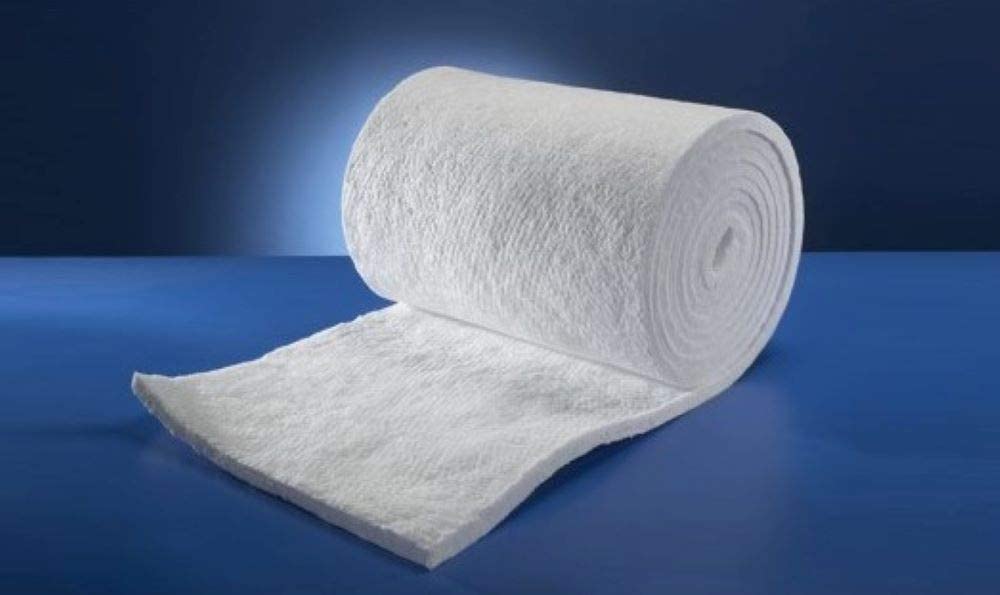
The classic traditional wood-fired brick ovens used at pizza restaurants readily come to mind, but a pizza oven can create that even crusted pizza without wood fire. Some professional models involve gas or electric heat.
Pro Tip
There is a direct relationship between the temperature o the oven and the cooking time of your pizza. The hotter the oven the faster the pizza will cook. Is best if you take notes and keep a record of your temperature and cooking time so you know what works best for you.
DIY Pizza Oven – Achieving a High-Temperature Bake
The main difference between your oven and a pizza oven is the maximum temperature reached by the two types of ovens. A pizza oven (referred to as a Masonry Oven) differs in its general construction.
In a standard oven, the highest temperature you can achieve is 500°F/260°C. A pizza oven can reach 900°F/500°C.
An oven designed to bake pizza also provides an even heat – cooking the pizza from both the top and bottom and can maintain a hover temperature.
Standard Oven
In a standard oven, once the desired temperature is reached, the heating element turns off entirely. It turns on again when the oven cools below the desired temperature—this dip in temperature results in an uneven internal temperature that may leave parts of the pizza uncooked.

The standard oven temperature is continually oscillating up and down, whereas the professional oven maintains a consistent, very high temperature.
DIY Pizza Oven – Differences in Insulation
In addition to the temperature differences, there’s also a difference in the overall type of heat.
The oven is an enclosed space and has a small amount of insulation, as well as some heat radiating off the sides.

In your regular oven, the heat source comes from the bottom. The upper element does not come on unless you are broiling.
Still, it’s a weak comparison to a professional pizza oven constructed with thick fireproof brick, stone, concrete, clay, or cob insulation.
The insulated interior absorbs and holds the heat – radiating it evenly throughout the baking process.
This insulation also allows the oven to reach much higher temperatures.
Will the pizza come out that different?
The quick answer is yes!
Whether you use one of the simplest of the techniques to mimic a professional bake or elect to invest in a professional home oven – the outcome will be noticeably different.
That’s not to say that all pizza lovers prefer the quintessential pizza. For some, pizza prepared in a standard oven is the familiar and preferred baking method.
Since taking the small steps to convert your oven or even smaller steps to change the baking method is easy, there is no harm in trying it out. Make that assessment for yourself!
Will a convection oven work as a pizza oven?
Convectional ovens are not the same as an oven specifically designed to make pizza. A convection oven is defined by the efficient circulation of warm air inside the oven during the baking process.
Convection Ovens
In convection ovens, a fan circulates the heat throughout the inside of the oven.
The similarity is that it creates a more even balanced heat within the baking cavity.
It doesn’t have a stationary heat source like a conventional oven.

A pizza oven is closer to a convection oven than a regular oven – but conventional ovens are unable to reach the characteristic high temperatures used in an oven designed for pizza.
Does having an electric oven or a gas oven have an effect on the oven conversion?
Whether you have a gas or electric oven, you can take simple steps to improve your pizza.
Even in the commercial market, the most popular professional ovens come in both gas and electric versions.
Remember, the two key components are:
- Being able to achieve high heat, and
- Having insulating elements that will hold the heat and radiate it out in the oven, maintaining an even hover temperature, and cooking the pizza from all sides.
These goals can be achieved with either an electric or gas oven.
So Let’s Get to It – How Can You Enhance Your Pizza?
We will start with the easiest methods and graduate to the more involved. You can begin with the most straightforward way and move up to more elaborate options.
You can move up from one level to the next and use everything you acquired as you move up in the following method to enhance your pizza.
Pizza Pun
The recipe said, “Set the oven to 180 degrees.”
Now I have no idea what to do because the oven door is facing the wall.
DIY PIZZA OVEN CONVERSION METHODS
The first thing you need to make sure you have correct before you implement any of the conversion methods is the setting of the oven.
DIY Electric Pizza Oven – Steps
Getting the Right Oven Setting: “Bake” or “Broil”
Setting the oven mode is probably the most frequent question of those starting to make pizzas at home. The “Bake” setting will direct the heat from the bottom of the oven while the “Broil” setting will direct the heat from the oven’s top.

When making pizza in a standard kitchen oven is best to set the oven in the “Bake” setting and place the pizza on the middle rack of the oven.
The heat source will come from the oven’s bottom, heating the surface where the pizza is set.
Simultaneously, the heat will bounce from the top and walls of the oven creating an even heat source throughout the entire pizza.
If you were to set the oven in the “Broil” setting, the heat source would come only from the top of the oven directly to the top of the pizza.
Since the pizza is set in a surface (pan, stone, or steel), the heat will not directly contact the heat, cooking only the top part of the pizza, leaving the bottom probably uncooked or mushy.
Gas ovens with only one heat source
But what happens if you have a gas oven that only has one heat source at the top of the oven?
The “Broil” setting will deliver constant heat from the top of the oven while the “Bake” setting for these ovens turns on and off the heat source located at the top of the oven.
The turning on and off will help maintain a constant temperature in the oven.

If you any one of these ovens, pre-heat the oven at the “Broil” setting at the highest possible temperature from 45 minutes to an hour.
This method will achieve higher temperatures than what is in the dial of the oven.
When baking the pizza, change the setting to “Bake” place the pizza on the oven’s bottom rack.
DIY Pizza Oven – Achieving the Perfect Pizza!
Here are the most straightforward steps and more involved ways that a pizza enthusiast can achieve a pizza much more like the type you order in an actual pizzeria.
Due to the cost of acquiring a professional pizza oven, very few people can afford one.
Still, anyone with a standard oven can enhance their pizza product with some easy and inexpensive tweaks.
There are several methods to improve the quality of your baking method.
For all these methods you need to pre-heat the oven in the “Bake” setting at 500°F for at least 1 hour.
The most common methods to convert your oven into a pizza oven are:
- Baking the pizza on a baking sheet upside down on the top oven shelf.
- Use a pizza stone, pizza steel, or ceramic tile to bake the pizza.
- Placing fireproof tiles on the oven racks both above and below.
- Lining the interior of the oven – above, below, and on the sides
We will discuss in detail each of these methods below.
Start with the Hottest Possible Oven!
As a very first step, pre-heat your oven to the highest temperature available on your oven dial.
When you insert your pizza to bake, set the heat to “Bake” to cook your pizza.
This method alone will create that residual heat and scorching oven, which it’s a step in the right direction.
Baking on the top shelf with an upside-down baking sheet
Preheat a hot oven, but then add to that by placing your pizza on a standard baking sheet upside down on the very top shelf in your oven.
This method lacks the insulation components radiating heat from all sides – but is another step toward mimicking a professional pizza bake.
You shouldn’t need anything additional for this method. Every kitchen likely already has a baking sheet. It just involves a slight revision in how you’re using your oven.
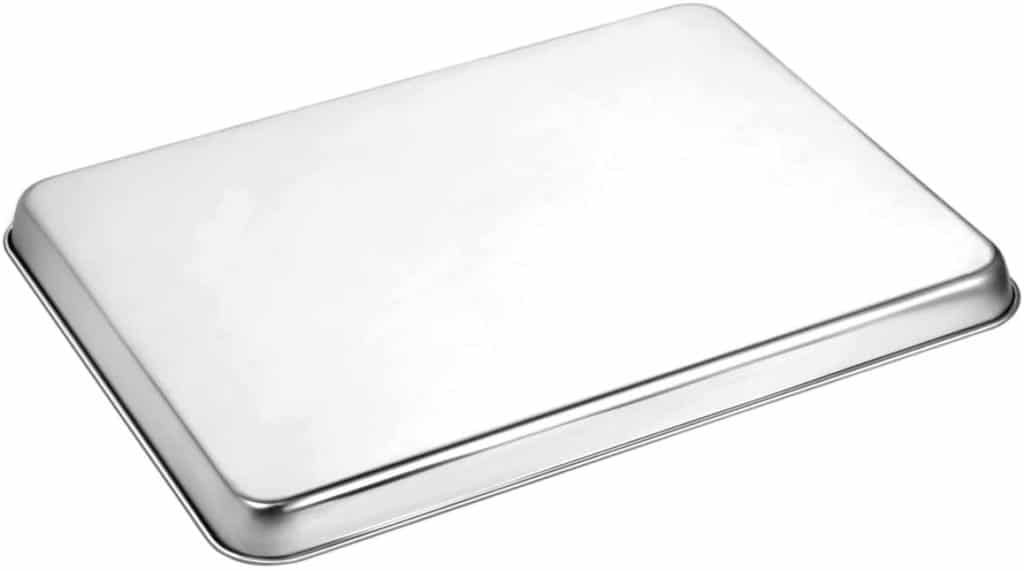
- Some opt for placing a sheet of parchment paper on the baking sheet to bake their pizzas. We don’t think this is necessary and you will run the chance of getting the paper stick to the pizza.
- A simple trick is to sprinkle a little coarse cornmeal before adding the dough to the baking sheet. This will prevent the dough from sticking to the baking sheet.
Using a better-quality cooking surface
Merely using a surface designed to create a more desirable crispy crust can make a big difference.
Some of these baking surfaces are:
Ceramic Tiles
Pre-heat from 1 to 1 ½ hrs.

Fire Bricks
Pre-heat from 1 to 1 ½ hrs.

Cast-Iron Pan
Pre-heat for 1 hour.

Baking Stone
Pre-heat for 1 hour.

Assuming that most pizza enthusiasts would have invested in such a device, you likely need not buy anything additional.
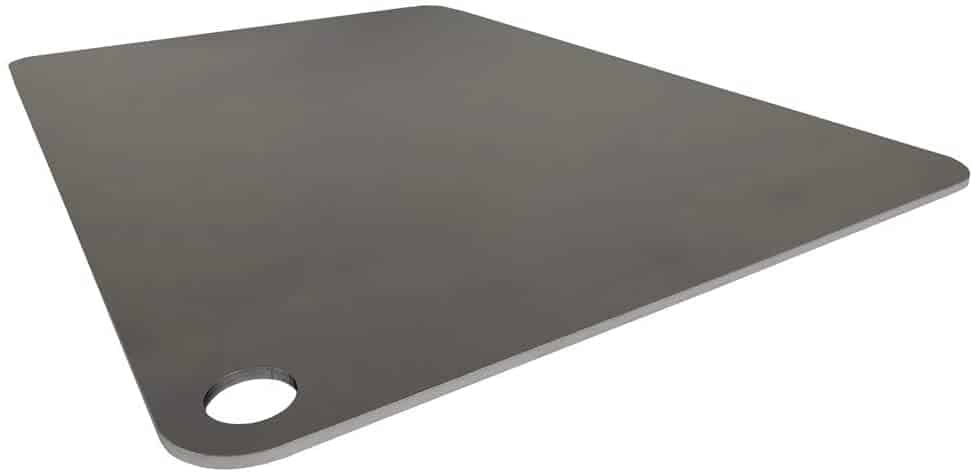
If you haven’t explored that route yet, it’s easy enough to pick up a baking stone or steel at practically any store that carries kitchen and baking supplies.
If you seek something even less elaborate, you can go to a hardware store and buy unglazed ceramic quarry tile to be used in the same manner as the baking stone or steel.
Here is what the PROs at Homemade Pizza Pro Use and Recommend
The Original Baking Steel is your secret weapon for recreating pizzeria-quality pizzas right in your home kitchen. Crafted from ultra-conductive steel, this game-changing tool captures and radiates heat with remarkable efficiency, ensuring a perfectly crisp, evenly baked crust every time.
It's not just for pizzas; use it for baking breads, roasting veggies, or even searing meats to culinary perfection. Durable, versatile, and easy to use, the Baking Steel is a true champion of home cooking that will elevate your baking game to professional heights.
Say goodbye to soggy, undercooked crusts and hello to the tantalizing taste of impeccably baked goods with The Original Baking Steel!
What are the differences between these cooking surfaces?
- A baking steel sheet is essentially a round or square surface to bake the pizza made purely from steel. Baking steels can also double as a griddle on your stovetop.
- Baking stones used to make pizza are made from clay, ceramic, or cordite.
By comparison, the baking stones are durable but can crack or break. Pizza tiles perform much like a baking stone but are even less expensive and easy to replace if damaged.
- The most significant difference between them is the way they conduct heat. There is a noticeable price difference between them.
- Pizza steels are virtually indestructible, they cook the pizza a little faster than a baking stone, and they are noticeably more expensive.
- Most cooks find a slight difference in the time it takes to bake a pizza with a stone negligible.
If you want to learn more about the difference between pizza stones are steels, you can check our article “The One Thing You Need to Make the Perfect Pizza.“
Pre-heating instructions if using tiles or fire bricks
With the other methods, you will set the oven dial to the highest temperature available.
Still, instead of an ordinary pre-heat of one hour- you will allow the oven to remain at that temperature for an additional 30 minutes.
This additional time allows for the insulating material to fully draw in the heat.
This step can significantly raise your oven’s temperature (up to 750°F), which more closely mimics a pizza oven.
Placing tiles above and below the Pizza!
You can achieve heat radiating from both top and bottom by merely placing a tile on the rack just above and below the rack used for baking your pizza. The gap between the two tiles should be from 6 to 8 inches.
Again, you will want to follow the steps for pre-heating the oven, as we discussed before after you’ve arranged the tiles. This method does not surround the pizza, but cooks from both the top & bottom.
Most find the results superior to a pizza baked in an oven with a single heat source from the bottom.
DIY Pizza Oven – Lining your oven to simulate a pizza oven!
In this method, you will need oven tiles, which you will place in your oven to create a pizza oven. You can purchase these tiles at any hardware store. You should ensure that they are fireproof.

In selecting a size, you will want to pick tiles that are of a medium size range. Either very large or very small tiles will be unmanageable; small tiles can fall through the grating on the oven shelves, very large tiles can be too large to maneuver inside the oven.
This method involves lining your oven’s interior with tiles to create a miniature pizza oven right inside your standard oven.
DIY Pizza Oven – A word on safety
Caution: Please note that adding tiles to create the insulating effect desired is designed to mimic a hot professional oven.
Following these instructions – you will be reaching a far hotter temperature than is indicated on your oven dial.
Fire Extinguisher
When handling a hot oven, always keep a fire extinguisher nearby. Modern ovens have safety features that automatically turn off the oven if they reach a temperature above what is intended.

In contrast, the older oven models may not have this feature and may cause harm or damage to your kitchen.
DIY Pizza Oven – Cooking Time
As a rule of thumb, to cook your pizza, you will want to go for the highest temperature possible for about 15 minutes before your pizza will be ready.
Of course, this will depend on the kind of oven you have.
We have an article that details the correct temperature and cooking time according to the type of oven you have called “A Beginner’s Guide to Oven Temperature and Cooking Time for Pizza”. Check it out and get the perfect pizza every time.
Buying a Pizza Oven
Choosing the right pizza oven for home, outdoor kitchen, or patio can be overwhelming.
A pizza oven is the focal point of any home, but there are many seemingly limitless alternatives.

Today you can choose from the simple indoor pizza oven to the high-end most beautiful built-in oven, and selecting the right option may be confusing.
We wrote an article on buying pizza ovens called “The Complete to Buying a Pizza Oven” to help you decide to get a pizza oven. Check it out!
Is a pizza oven worth it?
Pizza ovens are more than just decor or a talking piece for your home. Although they do add value to your home, they have so many additional benefits to consider.
So, whether you’re a pizza enthusiast, a foodie, or you just want a great pizza oven to make your creations, it’s essential to consider these benefits before you buy.
So, here are a couple of good reasons to get you started.
- Faster cooking times
On-the-go parents know how difficult it can be to whip up a home-cooked meal while dealing with their busy schedules. With a pizza oven, you can make a pizza in as little as 90 seconds, depending on how thin you like it.
- Bring the family together
Your family deserves a fun way to spend time together, and there’s no better way to accomplish this than with a pizza oven. Invest in one of these culinary wonders and bless your family’s taste buds with the authentic taste of Italy.
- An Unforgettable Experience
Pizza ovens are more than just cooking gadgets. They create an entire cooking experience that isn’t often found in many other methods. There is something special about getting back to the “roots” of cooking, and you’re sure to enjoy it every single time. Friends and neighbors will love to see your oven at work, too, and it is quite a show to watch a pizza being cooked from start to finish.
- Save Time and Money
How many times do you order pizza in a week? How about in a month? Year? If you’re an “average” person, statistically, you’ll consume 46 slices of pizza every year.
About 93% of Americans eat at least one slice per month. The bottom line is if you’re on this website in the first place, you probably have something of a pizza-tooth.
Instead of ordering out once a week, or dealing with the time and hassle of making pizzas in a traditional oven, consider investing in a pizza oven.
Building Your Pizza Oven!
If your enthusiasm grows to the point of wanting a true pizza oven, building your own is not outside the realm of a possibility.
It will clearly involve more expense and effort than the previous methods we’ve outlined to achieve a superior pizza, but it might be entirely worth it for you!
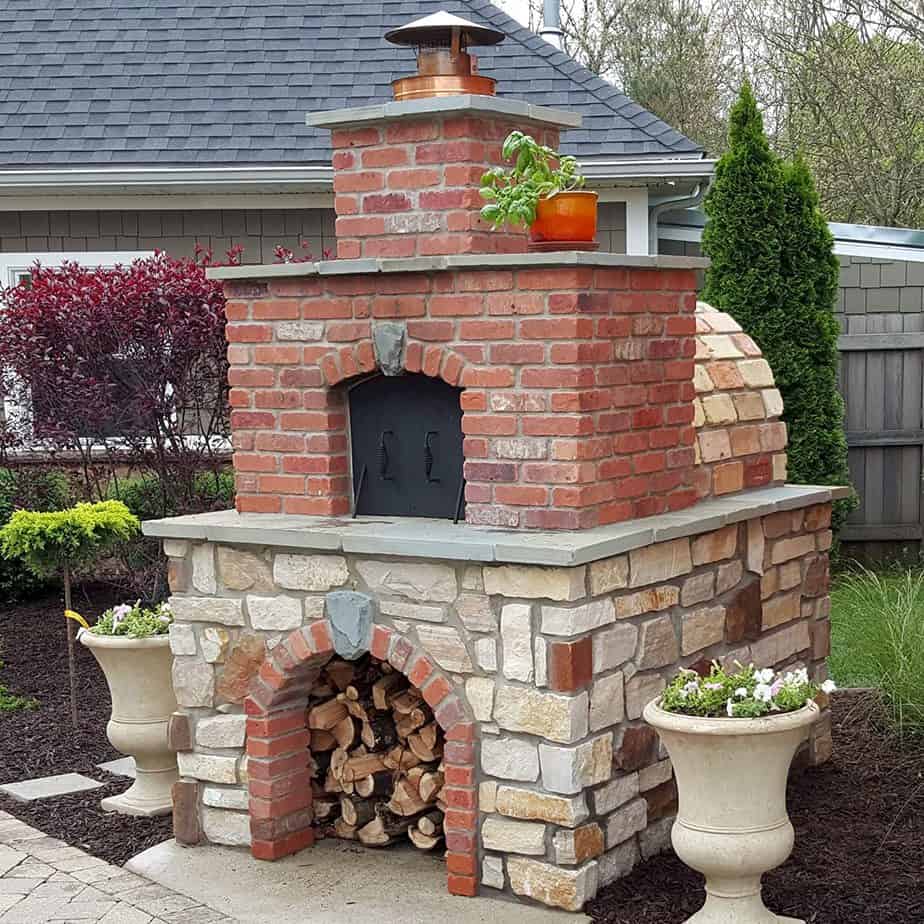
Building Your Pizza Oven!
Steps to build a standing brick oven is certainly something attainable if you have space, budget, and interest in doing so.
Can other foods be prepared in a pizza oven? Cooking More Than Pizza
Your pizza oven can be used for more than a pizza. It’s just like any other cooking gadget—just hotter and more efficient! Don’t be afraid to experiment with different recipes.
Everything from meat and vegetables to bread and desserts can be fired up in minutes. Check out our recipes blog for a variety of great recipe ideas! You’ll certainly never run out of ways to put your oven to good use.
Any food that shares the characteristics of being enhanced by a crispy crust and a fast- hot oven will have the same lovely result as cooking a pizza. Some foods that will be ideal for cooking in your converted pizza oven include:
- Bread
- Pulled Pork, BBQ Ribs Steak
- Turkey, Roast Potatoes
- Whole fish, Sardines, Shrimp
- Cakes
- Pies
Here are some products related to this post
Made from Strong and Durable Clay. They are baked at high temperatures Over 2000°F, which helps to harden and prevent cracks and discoloring whiting the years.
Rutland Firebox Bricks are intermediate-duty bricks that can be used to build new fireplaces or to replace old or broken bricks in existing fixtures (wood or coal stoves, furnaces, and fireplace inserts).
With this White Ceramic Insulated Baffle Blanket, you will be getting 1 Roll that measures 25' (300") x 24" x 1". This can be used for Fireplaces, Kilns, Wooden Stoves, Furnaces, Stoves Pipes, Blacksmithing, Forging, Soldering, Pottery Kilns, Boilers, and various other applications It is able to withstand 2400F or 1315C temperatures and the product is Non-Toxic. The rolls are easy to lay out and cut with a sharp knife/blade.
Additional Resources
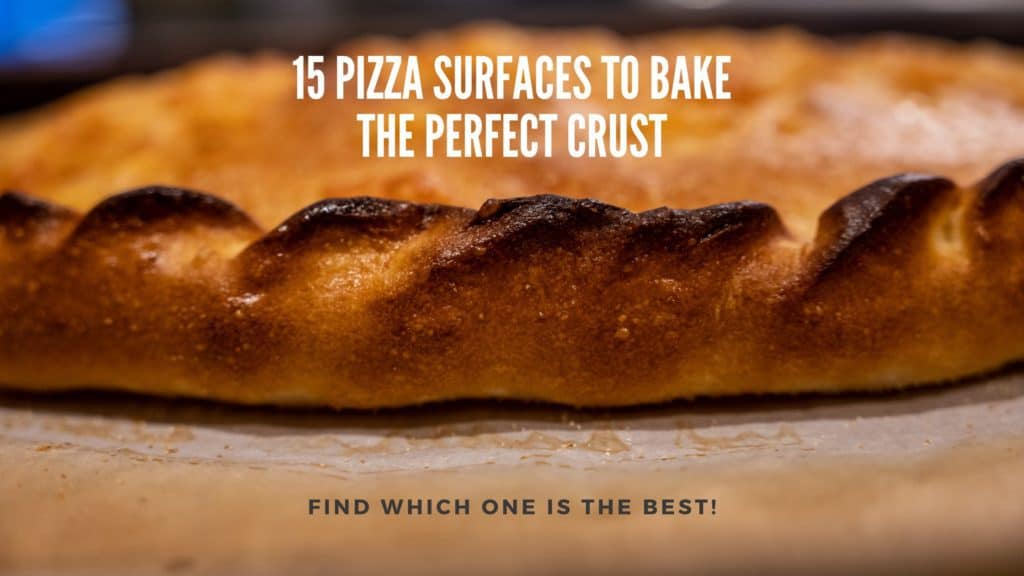
Insanely Powerful Pizza Baking Surfaces that will Give You the Best Crust
Find 15 alternatives for a pizza baking surface. You may be surprised as some of them you may already own and some may take you for a spin.

What is a Pizza Stone? Discover the Most Practical Answer
Do you want to achieve the perfect pizza crust? Now you can. This revamping tool will be the key to the crust you crave.
The Last Slice
We’ve discussed several methods that you can use to give you a surprisingly fun result with your standard oven to create the perfect pizza!
Have you tried any of these methods?
Do you do anything different to transform your oven into a professional oven? If so, please let us know; we would love to know what you do differently.
Enjoy!
Not a PRO? Not a Problem!
Take a pizza class to bring your pizza skills to the next level,
so you can be a PRO!
Related Posts

Costco Pizza Delivery: Find How You Can Get It Now!
the PROs
People go to Costco’s food court for many different reasons, but the cheesy slice of pizza they serve is among …

Pizza for Beginners: Don’t Buy Pizza, Make It! Here’s How to Get Started!
the PROs
You have this idea that you want to make pizza at home as opposed to ordering it, but where do you start? Don’t worry! Here you will find answers and directions to all your questions.

Pizza Toppings Under Cheese or Over Cheese? [Why the Order Matters]
the PROs
Is Pizza Cheese on Top or Bottom? Hey pizza lovers, are you wondering if you should layer pizza toppings under …
Newsletter
Subscribe to our Recipe of the Week newsletter and receive our partners’ latest recipes, tips, and discount offers.
Keep in Touch!





